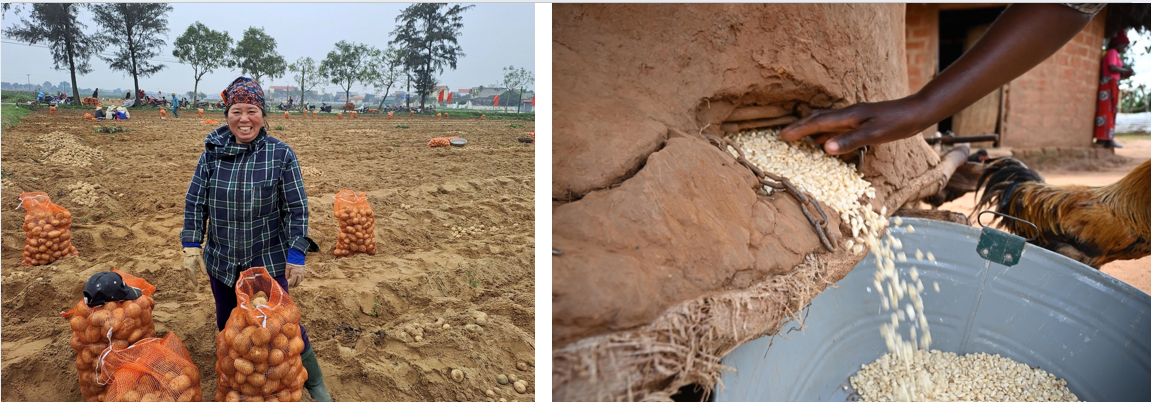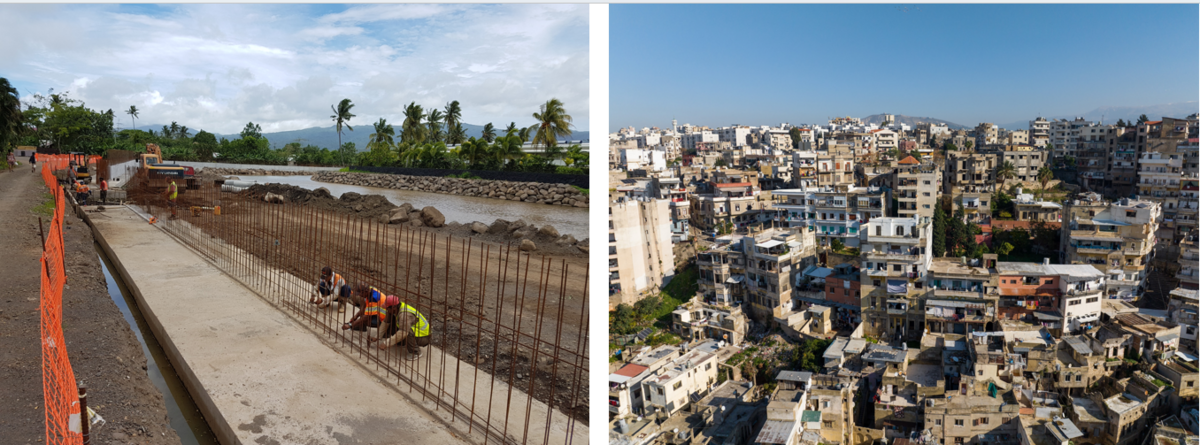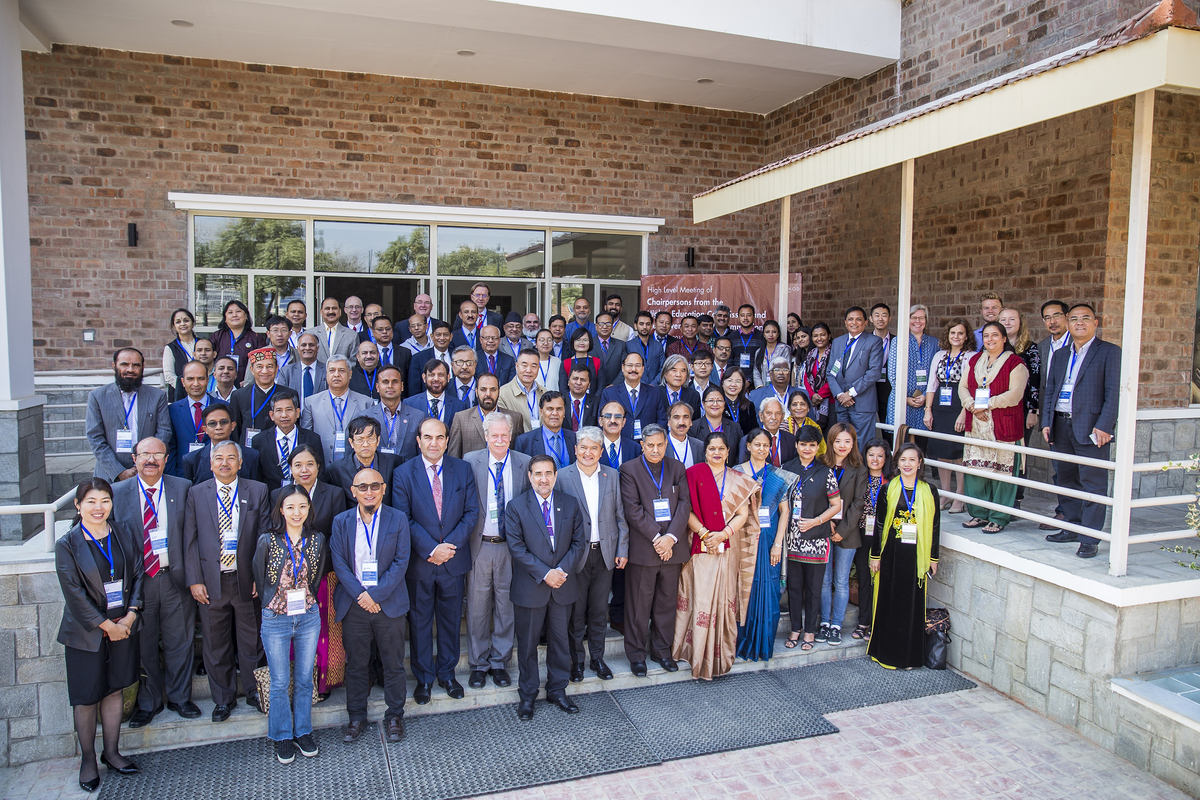
by UNDP
BASIC INFORMATION
Overview
As the United Nations lead agency on international development, UNDP works in 170 countries and territories to eradicate poverty and reduce inequality. We help countries to develop policies, leadership skills, partnering abilities, institutional capabilities, and to build resilience to achieve the Sustainable Development Goals. https://www.undp.org/about-us
Headquarters: New York, USA
Established: 1966
Mission
UNDP’s mandate is to end poverty, build democratic governance, rule of law, and inclusive institutions. We advocate for change, and connect countries to knowledge, experience and resources to help people build a better life.
Summary of Key Activities
UNDP has six ‘Signature Solutions’ as outlined in its Strategic Plan (2022–2025):
- Signature Solution 1: Poverty and inequality
- Signature Solution 2: Governance
- Signature Solution 3: Resilience
- Signature Solution 4: Environment
- Signature Solution 5: Energy
- Signature Solution 6: Gender equality
Our Climate Change Adaptation portfolio encompasses the following:
- Adaptation policy and planning / mainstreaming adaptation
- Climate-resilient livelihoods
- Fostering climate resilience for food security
- Ecosystem-based adaptation
- Water resource management and access to water
- Coastal adaptation
- Climate information and early warning systems
- Urban climate resilience
- Climate change and health
- Climate-resilient infrastructure
- Climate security
Activity 1: Adaptation policy and planning / mainstreaming adaptation
UNDP’s policy and institutional support on climate change adaptation planning and policy is delivered through the National Adaptation Plan (NAP) processes in Developing and Least Developed Countries (LDCs). The NAPs are carried out in an integrated approach linking to NDCs and contribute to UNDP’s Climate Promise. At the core of NAPs is a commitment to accelerate climate action and action on SDGs through mainstreaming climate risk at all levels of development- local, national, regional and global.

Photo
Left: UNDP Climate UNDP BiH NAP
Right: Inter-ministerial technical workshop on valuation of climate change impacts in Viet Nam
Case for Activity 1
‘A milestone in Bhutan’s journey to adapt to climate change’, October 2023
Activity 2: Climate-resilient livelihoods
UNDP supports the advancement of climate-resilient livelihoods for vulnerable communities, including resilient agricultural value chains. A failure to adopt climate-resilient measures to support sustainable livelihoods is likely to jeopardize food and income security, and lead to the loss of assets and increasing impoverishment. The main areas of UNDP’s work include support to entrepreneurs and micro, small and medium enterprises (MSMEs) with a special emphasis on women entrepreneurs, development of public goods to build market resilience, and promoting income diversification and improved productivity. This work supports global efforts to achieve the Sustainable Development Goals (SDGs), especially goals for ending hunger and poverty, promoting decent work and economic growth, and supporting responsible consumption and production practices.

Photo
Left: Cultivating Potatoes and Regenerating Mangroves, Credit: Nguyen Viet Nghi, UNDP Viet Nam
Right: US Secretary of Treasury (Janet Yellen)'s visit, Feb 2023, Credit: Newton Mwale/UNDP Zambia
Case for Activity 2
‘CLIMATE-SMART FOR THE FUTURE: How smallholder farmers in Zimbabwe are reaping bumper crops by adapting to a changing climate’, April 2023
Activity 3: Fostering climate resilience for food security
Droughts, floods, changing rainfall patterns, and other extreme weather events put vulnerable communities at risk. With improved access to climate information, new technologies, and advanced land and water management techniques, vulnerable communities are receiving the tools they need to feed their families today, tomorrow and into the future. This service line addresses the risks of climate change across the value chain – especially agricultural products that are important to food and nutrition security. The main areas of work include pre-production and input management; capacity to provide and apply climate information services; production and diversified integrated systems; and post-production offerings including the provision of financial services and access to markets.

Photo
Left: Agricultural inputs distribution, Ngala LGA_Women farmers in Ngala Credit: Amalachukwu Ibeneme/UNDP Nigeria
Right: Climate-resilient agriculture: coffee plantation Credit: UNDP Sri Lanka.
Case for Activity 3
LOCALLY-SOURCED: How Kiribati is shoring up food security and community resilience in the face of global climate change’, February 2023
‘Revolutionizing rain-fed farming for food security in Sri Lanka’, January 2023
Activity 4: Ecosystem-based adaptation
The conservation, rehabilitation, and management of biodiversity and ecosystems increases resilience to climate change and has the potential to provide low-cost and long-term solutions to protect lives, livelihoods, and infrastructure, while advancing the achievement of multiple Sustainable Development Goals. UNDP supports countries to integrate conservation and targeted restoration of natural ecosystems and degraded landscapes – such as mangrove forests, wetlands, and catchment forests – into an overarching strategy for ecosystem-based adaptation that provides protection against climate change threats, either as part of a hybrid adaptation strategy or as standalone measures. The main areas of work include enhanced management to safeguard ecosystem services, restoration of coastal wetlands to protect communities against storms, slope stabilization through agroforestry and natural forest regeneration, halting or reversing land degradation and desertification, promoting sustainable productive landscapes, and improving water resources management, as well as catalyzing finance from the private sector for ecosystem-based approaches in order to build socio-ecological resilience. Ecosystem-based adaptation is included within countries’ National Adaptation Plans, and cuts across multiple sectors with relevance for food and water security, among other societal needs.

Photo
Left: Planting mangroves, collecting data Credit: Alex Ray/UNDP
Right: Buffering communities from heavy winds and storm surges is essential for coastal protection. Credit: UNDP Bangladesh
Case for Activity 4
‘How forests and young people are solving Honduras’s water crisis’, September 2023
‘Harvest and take care of the environment: A story of home grown resilience from El Salvador’, November 2023
Activity 5: Water resource management and access to water
Climate change and increases in extreme events such as droughts and floods, coupled with natural resource degradation, is putting water for drinking, agriculture, and other uses at risk across the globe. Ensuring access to reliable water is an essential component of UNDP’s climate change adaptation service offer. The main areas of work include watershed management and catchment rehabilitation, sustainable land management, improving access to drinking water and water for domestic use, and promoting integrated water resource management systems. Water systems are under threat from pollution, inefficient water use, habitat loss, and climate change and can become the source of local and regional conflicts. UNDP assists local, national, and regional initiatives to identify priorities and agree on governance reforms to promote integrated, ecosystem-based, climate-resilient approaches for water resources management. UNDP supports National Adaptation Plans, climate information, and early warning systems, with ecosystem-based adaptation offering cross-cutting solutions for sustainable water management.

Photo
Left: GCF-funded project, Maldives June 2022. Credit: Ashwa Faheem/UNDP Maldives
Right: Water tank under Er2cC project in Comoros Credit: UNDP Comoros
Case for Activity 5
‘Integrated Water Resources Development: The Way Forward for Sri Lanka to tackle the Climate Crisis’, October 2023
‘ON TAP: HOW THE MALDIVES IS RESTORING WATER SECURITY ON ITS MOST VULNERABLE OUTER ISLANDS’ July 2022
Activity 6: Coastal adaptation
Promoting integrated, ecosystem-based, climate-resilient management of the world’s rivers, lakes and oceans is an essential component of UNDP’s climate change adaptation service offer. The main areas of work include watershed management and catchment rehabilitation, sustainable land management, coastline protection, and promoting integrated water resource management systems. Coastal cities, small island developing states, coastal habitats, and marine environments are particularly vulnerable to the impacts of rising seas, coastal degradation, salination, and other climate impacts. To address these interlinked challenges, UNDP’s urban resilience and ecosystem-based adaptation programming is also preparing coastal communities and coastal habitats to become more resilient to climate shocks.

Photo
Left: TCAP Funafuti reclamation
Right: Malawi's lakes provide a diversity of ecosystem services and livelihood benefits Credit: UNDP Malawi
Case for Activity 6
‘Rainwater tanks and "Paani Apa" bring relief to women and families living in Bangladesh's southwest’ (video), December 2022
‘Rising tides: Adapting to climate change along Asia and the Pacific's vulnerable coastlines’, September 2022
Activity 7: Climate information and early warning systems
Through this service line, UNDP is protecting lives and livelihoods, providing people with the information they need to thrive and enhancing evidence-based decision-making. The main areas of work include reducing reliance on one type of technology, developing shared databases, involving communities in product design, information sharing within and between countries, development of climate information infrastructure, climate information dissemination and value chain development, capacity-building for modeling and forecasting, use of alternative technologies, private sector engagement, digitization of historical records, and impact of warnings and advisories on livelihoods and behavior.

Photo
Left: Automatic Weather Station under EWS Project, Cambodia
Right: Installation of automatic weather station on Abemama island, Kiribati
Case for Activity 7
‘Modernized Climate Information and Early Warning Systems in Malawi’ (video), November 2022
Activity 8: Urban climate resilience
Cities globally are highly exposed to disaster and climate-related risks. With accelerating urban growth, increasing exposure to climate change risks and multi-dimensional vulnerability, it is critical for cities to employ an integrated, climate risk-informed development approach to advance resilient lives and livelihoods, and achieve progress towards the Sustainable Development Goals (SDGs).
For UNDP, the main areas of work are developing enabling environments and an evidence base to inform urban climate-risk management; enabling investments in urban climate resilience, including through nature-based solutions; and accelerating the ambition and scale of urban climate actions.

Photo
Left: GCF-funded project, Vaisigano Photo credit: UNDP Samoa
Right: Lebanon Urban Planning Densely populated areas in Lebanon. Photo credit: Fouad Choufany/UNDP Lebanon
Case for Activity 8
‘Dealing with flooding in the capital: Flood-proofing Apia by improving drainage, thanks to the GCF Vaisigano Catchment Project in Samoa’, July 2023
Activity 9: Climate change and health
Climate change has far-reaching impacts on human health and well-being. Health planning must integrate climate change (and vice versa) to ensure adaptation measures are in place for both preparation and response to these clear and present risks. Changing temperature and rainfall patterns impact crop yields, food security, water security, and nutrition, and increase the incidence of water and vector borne disease. Increased frequency and intensity of extreme events can cause not only injury and death, but also increases the risk of water-borne diseases (diarrheal disease, Hepatitis A and E, bacterial diseases such as cholera), diseases associated with crowding (measles, meningitis, acute respiratory infections), vector-borne diseases (malaria, dengue, Japanese Encephalitis), and psychological and emotional distress related to traumatic events, natural disasters or displacement. Health impacts from climate change are exacerbated in countries where health systems already struggle to manage existing health risks, and capacity to adapt to additional climate change-related health risks is limited. At particular risk are the most vulnerable: children, elderly and low-income communities.

Photo
Left: Flooding along road to hospital
Right: photo
Case for Activity 9
‘DISASTERS, DISEASE, RESILIENCE: Reducing risks by building climate resilient health systems across the Pacific’, October 2023
Activity 10: Climate-resilient infrastructure
Around the world, the impacts of climate change – rising temperatures, shifting patterns of rainfall, more frequent and intense extreme weather, and rising sea levels – will affect all types of infrastructure from energy and transport to water, waste, and telecommunications. Ensuring the climate change resilience of infrastructure will help to protect lives and livelihoods, reduce direct losses as a result of extreme weather events, and play a key role in meeting the mitigation targets of the Paris Agreement, as well as to meet national development aspirations. Working with a range of partners, and drawing on ecosystem-based adaptation approaches, UNDP is supporting countries to climate-proof rural and urban infrastructure and to advance resilient infrastructure planning. Under the global adaptation portfolio, this work ranges from flood and coastal protection measures to early warning systems to support for enhanced planning and policymaking.

Photo
Left: Incorporating storm and flood resilient design features into new houses Credit: Vu Ngoc Dzung/UNDP Viet Nam
Right: The Achkva river raises often during heavy rains, threatening the coastal city of Kobuleti. Rehabilitation of 2km-long artificial channel is underway Credit: UNDP Georgia 2022
Case for Activity 10
‘A landmark moment: Tuvalu is lifted above sea-level’, November 2023
‘Channelling a safer future: How Georgia is engineering a climate-resilient future, safe from floods’, August 2023
Activity 11: Climate security
The adverse impacts of climate change are magnified in conflict-affected and fragile contexts, where people are already in humanitarian need and exhausted their coping resources. UNDP is overwhelmingly present in these contexts, supporting adaptation and resilience-building through food and water security, restoration of ecosystems, and enhanced climate information and early warning systems. Community empowerment, especially of youth and women, through community-based approaches, locally led action, and community aggregations are also dominant features of adaptation interventions in fragile contexts.

Photo
Left: Gardo_Rangeland_-40
Right: Young women collecting water in Lugo Watershed Photo credit: Melanie Pisano/UNDP
Case for Activity 11
‘Climate resilience can be a catalyst for peace and prosperity in the Sahel’, September 2023
Related Information
KEYWORDS
- # Organization/Network
- # Local Communities
- # Adaptation Action/implementation
- # Adaptation Planning/Policy
- # Capacity Building
- # Climate Projection
- # Education/Awareness/Information
- # Impact Assessment/Risk Assessment
- # International Cooperation
- # Locally-led Adaptation
- # Research/Innovation
- # North America
- # United States




